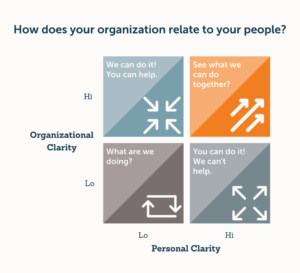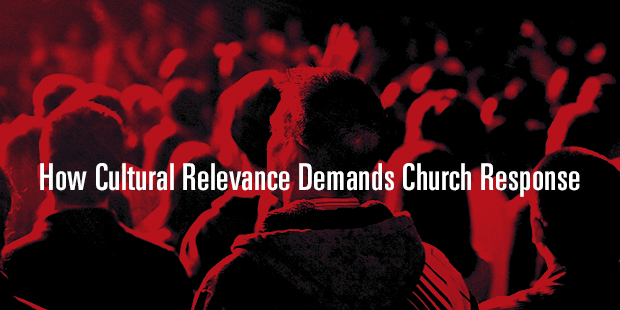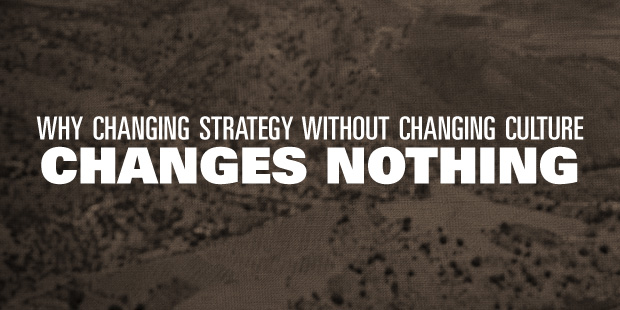
If Your Culture is Stuck, HOW is It Stuck?
You’ve taken a big step to read this article if you’re reading it the week it was published. It’s September, and that means you’re slammed. You are either launching or have recently launched initiatives for the fall. If you have kids to get into the school routine, that only compounds the busyness.
Will this September get your organization and your people moving forward? Will this fall’s initiatives make a difference? Or will it be a fast-moving treadmill, drawing a lot of energy but not getting anywhere?
Last September was as busy for leaders everywhere as this one is. But did it get them as far as they hoped it would? Or are they merely back to doing more of the same as last year—maybe a little more, maybe a little less, maybe some changes around the edges, but essentially making the same swift strokes to keep the organization’s head above water?
If you feel that your organization’s disciplemaking culture is stuck, you are not alone. Many leaders feel that way.
When we’re stuck, our instincts push us to try a little harder or maybe to flip some switches and turn some dials that are easy to reach.
But culture shift isn’t primarily about technique. It’s primarily about relationship—the relationship between your organization and the individuals that make it up. Until the relationship changes, the culture won’t.
There is not just one kind of stuck relationship, however. To understand how to move your culture forward, you first need to understand what the relationship between organization and people is like today. You diagnose it by asking two questions:
- Is my organization clear about its unique calling from God?
- Are individuals in my organization clear about their unique calling from God?
These two questions yield four answers that indicate where your organization is now and where it needs to go next.

Relationship #1: “What are we doing?”
When organizational clarity is low, the organization may help people, but without a clear vision, its leaders’ hope for the future defaults to merely engaging more people. Likewise, when personal clarity is also low, an individual may be loyal to the organization while it delivers what he or she likes. But without a clear vision, the individual defaults to seeking personal gratification, even if it is defined in spiritual terms.
No matter what good things might be happening in the organization, when organizational clarity and personal clarity are both low, the organization has gotten stuck in “preservation mode.” No organization starts out this way. There was always a fire, a zeal, a cause that people took a risk to make real. But it’s common for organizations to become victims of their own success. With so much to keep track of and with so many people who joined for different reasons than those at the beginning, it becomes hard to remain clear on what the organization does and why and how it does it. Under these conditions, the unconscious, default vision for both the organization and its people is “keep what we like and get more of it.” Together they spin in circles.
Relationship #2: “We can do it! You can help.”
When organizational clarity is high, the organization has a compelling discipleship vision and a robust capacity to form believers accordingly. Yet it needs volunteers to make the machine run, so leaders recruit people to fill slots to keep producing. However, when personal clarity is low, individuals in the organization essentially become part cogs in the machine, part products that the organization manufactures. They are passive in the process even if they are busily involved with it.
Some individuals may resist the organization’s vision because it threatens to upset the place, people, and programs they hold dear. Some like the vision in principle but keep their distance in practice. Many, however, wholeheartedly embrace the organization’s vision as their own, which is exactly what leaders hope will happen.
Unfortunately, when people confuse the organization’s calling with their personal calling, over time they frequently lose interest, lose faith, or lose heart. They joined the organization’s cause by filling a slot where volunteers are needed, because they have been persuaded that it is what Christ wants them to do. But in time they get restless because they come to feel like a square peg in a round hole or burned out because they don’t get fueled and impassioned by what they are doing.
Others are more content with their service. They get acknowledged and rewarded for serving in the same volunteer role for 20 or 30 years. But sometimes you may wonder, “Have we let this person down? Is it really God’s will for this person to stay in the same function all that time? Or have we kept the person in the place that was convenient for us?”
When organizational clarity is high but personal clarity is low, the organization often unintentionally, unknowingly manipulates people into positions they have no business committing to because they do not accord with their divine design. Or they keep them in positions forever that they can never leave. Volunteers become victims of the organization’s success, and sometimes they flake away feeling used. In the end, the organization is stuck in “direction mode”—that is, because it is so sure of its direction, it is equally sure about how to direct others. Ironically, organizations fail to reach the disciple-making goals they sincerely believe in because they subtly come to count their people more as human resources than as individuals on unique journeys with God.
Relationship #3: “You can do it! We can’t help.”
When organizational clarity is low but personal clarity is high, the organization is blessed with individuals who attempt to bring their passion and personal clarity to the organization. The problem is that the organization’s leaders don’t know how the individual’s dream fits with the organization because it doesn’t know how anything fits. The consistent justification for the activities it does is that it is in the habit of doing them. So leaders are often thrilled at first by the energy and vision of the new person, but the good times don’t last.
For example, the organization may want the leader to channel her talent into a neat, prefabricated box of volunteering. But if the person persists in pursuing the unique vision God gave her and cannot find a home for it in the organization, she will eventually redirect her service, money, and time away from the organization that she used to give there.
Sometimes this happens in the name of being “missional.” An organization sees itself as succeeding when it urges its people to follow their respective callings out into the world, but it provides them no support or equipment to succeed in mission there. It may desire to be a great “sending” church, but its impact isn’t sustained as individuals get exhausted without the help of the body of Christ.
Alternatively, the organization may embrace multiple driven, dynamic leaders, but their visions are incompatible. Like vandals spraying graffiti, they make great art, but they paint where they don’t belong. As each one tries to steer the organization according to their own passion, conflict erupts or else the organization breaks down into disunited, self-contained silos. In all these scenarios, the organization is stuck in “permission mode,” allowing people to function but seeing scant impact because of wasted, contradictory, and unsustained energy.
Relationship #4: “See what we can do together?”
When both organizational and personal clarity are high, the organization functions as an Olympic team. It recruits, trains, and equips people to be world-class leaders, devoted to the same goal of success in obeying the Great Commission. Each individual is a champion, both performing solo and contributing in community in a variety of ways according to their unique talents.
When both personal and organizational clarity share first place, individuals pursuing God’s dream for them and the organization pursuing God’s dream for it are not an either-or choice but a both-and reality. Both individual uniqueness and organizational unity are at a maximum. The organization sees the irreplaceable value of each individual, and the individuals recognize that without the organization, they will not fully live out God’s calling on their lives. Each side is fueled and renewed by the other’s success, an ongoing, upward spiral.
When an organization is in “mobilization mode,” even when God does lead an individual on from the organization, the person isn’t considered to be lost but to be sent. When an organization equally prioritizes clarity for itself and clarity for its people, both realize their calling and the blessing of making an impact that resonates far into the future.
Productive collision
I encountered a great illustration of this principle when one of my daughters studied chemistry. In chemistry, a productive collision occurs when the correct side of one molecule smashes into the correct side of another with enough energy to burst their molecular bonds and re-form into something new. When an oxygen molecule is part of the collision, it releases a great deal of energy. This is called combustion, commonly experienced as fire.
When breakthrough clarity both for an organization and for individuals collide productively, they combine into something much stronger than either of them alone, and they unleash extraordinary energy, power, and movement. In short, when an organization and its people both know their special callings from God, the collision lights a fire for him that cannot be quenched.

Tags: Culture, Kelly Kannwischer, Stuck Culture, younique
































